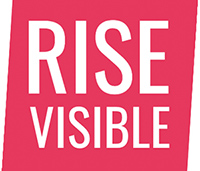Most Popular CMS
WordPress is a popular open-source content management system for creating blogs, websites, and other content, which makes it one of the most popular CMS (Content Management systems) worldwide for the last 7 years in a row.
62% of websites that use CMS use WordPress.
Over 400 million people visit WordPress websites each month and 661 new WordPress sites go live every day. Plus, there are over 50,000 plugins available to enhance your WordPress website. Wow!
The good news and bad news about those statistics is that WordPress is one of the best and most customizable CMS options for websites, however, it is also vulnerable to malicious developers creating dangerous plugins that can destroy your whole site, steal data, and potentially cause your site irreparable damage.
WordPress is an amazing platform
Don’t let that scare you away from WordPress because it is a fabulous website-building tool and if you are careful in your choices and are aware of the danger, you will be in good shape.
It is such a great platform that 62% of the top 100 fastest growing companies in the US (Inc. 5000) use WordPress.
Plugins are fun, but take caution
There are so many fun and exciting things to come across. As you imagine how neat it will make your site, it’s easy to forget the risks.
The simplest things to think about are how the plugin will work with your theme, if it is compatible with any custom CSS you or your developer has used, and will it play well with other plugins you are currently using.
It’s also possible that plugin conflicts will arise because different plugins use different coding languages or were made by different developers who don’t always communicate well with each other.
Even if two plugins seem to work together at first, they may not continue to do so as time goes on (and as WordPress updates).
In addition to those potential problems, some plugins are outdated and haven’t been updated since 2013 or 2014 (when WordPress 4 was released).
Other ones have security holes that hackers could potentially exploit to gain access to your site’s database and steal information from it.
Which means it’s always best practice not only to stay current with all software updates but also to keep an eye out for any new vulnerabilities being reported within plugins themselves!
Malware infections can result from malicious scripts included deliberately inside code written by developers and your website site could inadvertently become infected.
Lastly, they can also impact website performace, so kepe and eye out for that.

Backup your website before you add plugins
If you’re not already backing up your site, do that first. Otherwise, it’s possible that installing the wrong plugin could destroy your whole site and all of its data. WordPress has a fantastic guide on how to back up your site in the dashboard area.
There are two main ways to back up:
Manual Backup: This is useful if you want to export a specific post or page (like an article). It gives you more control over what gets exported because it only allows you to select certain post types (for example, posts only).
Full Backups: This method takes a full snapshot of all files and folders on your server so that nothing is left behind by accident. You should do this often!
Why you need to test out the plugin before installing it
Testing out the plugin is essential. Your website is your livelihood, so you need to make sure that it works properly before installing any new plugins.
There are several things you should look for before adding a new plugin:
1) Make sure it’s compatible with your site. If a plugin doesn’t work on your WordPress platform, then it won’t do what you want it to do.
2) Make sure it’s compatible with your theme. Themes are designed to work with certain types of plugins and not others—if the two don’t match up well together, then they may cause problems in how smoothly the site loads or functions later down the road when you try using another feature from within both products at once (like an image gallery).
3) Check compatibility with hosting companies as well; some hosting platforms only offer one type of software breed (such as cPanel), whereas others allow multiple kinds so long as they’re all compatible with each other – this means having better access than ever before!
4) Before you install anything, make sure it’s what you need. Don’t just go for the first thing that promises to solve all of your problems.
5) Make sure there’s a real need for the plugin and that its main purpose is something that will help improve or make more efficient use of your website or blog, rather than just being a random feature thrown in for funsies or as part of an advertising scheme (i.e., if they give away their product with every sale).
6) Check reviews—and look at many different places, not just one source: Amazon reviews are great because they’re unbiased (or close enough), but don’t rely solely on them!
Check out other sites’ opinions too; even if they aren’t professional reviewers themselves, they’ll still give valuable insight into whether certain plugins are worth using or not based on personal experiences.
Notable and safe plugins
The 19 most popular plugins have over 1 million downloads each and 5 of them are even beyond the 50 million mark. What are the top 5 WordPress plugins?
WooCommerce
All in One SEO Pack
Akismet
Google XML Sitemaps
Contact Forms 7
Let’s recap what we’ve learned today
When choosing a plugin, make sure it is compatible with your theme and other plugins. It should also be updated regularly. This ensures that you get the best experience possible with each of its features. Also, make sure that you keep your website and plugins always updated.
Not every plugin is right for every website or budget level, so choose wisely!






